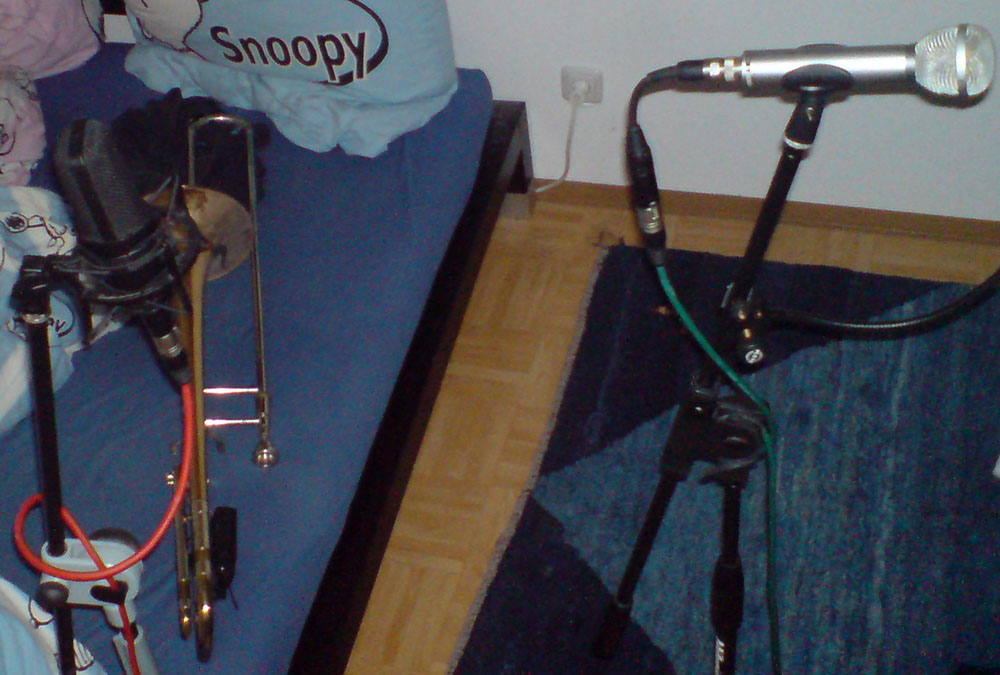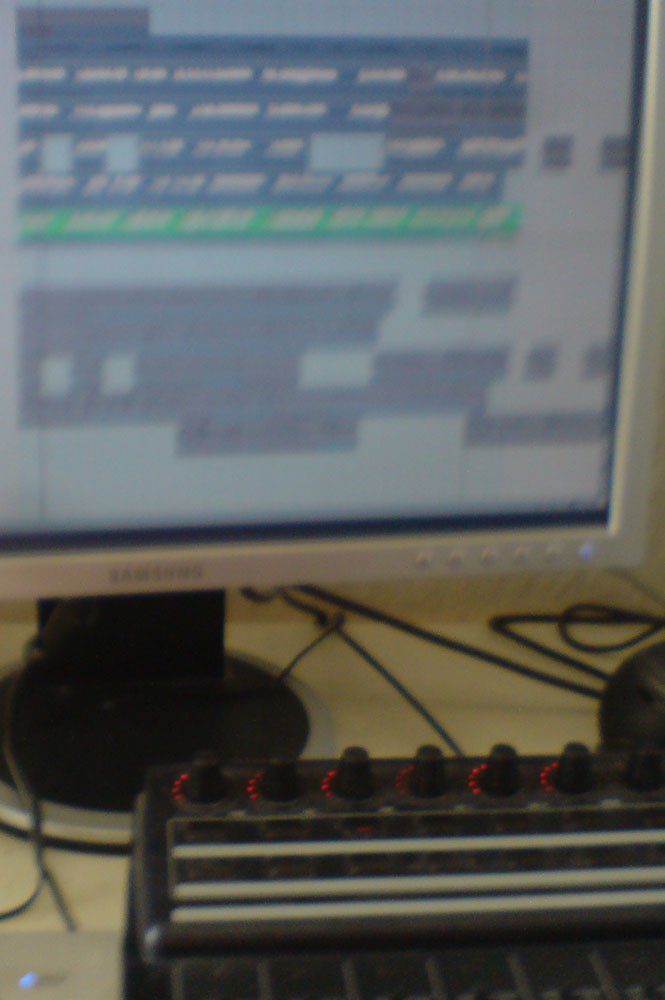When defining the tentative tracklist for this project, one of the sources for inspiration was going through files on my harddisc. Among that, I found a directory with Cubase projects where I had simply tried some of the fancy things possible with this program.
One of those tracks was only used for testing how to convert an electric guitar into an acoustic one. Back then, the process was about this: I recorded some arpeggiated chords (played on my trusted Ibanez superstrat) via DI into the computer. Then I sent this sign
al through a) the Boss VF-1 acoustic guitar simulator (which I recorded) and b) a free VST called Deep Board by NUSofting (strangely, they don’t seem to believe that it was very good – any trace of it has vanished from their website).
Back then, I also decided to add some bass (a very angular-funky played with a combo of a Juno-60 and a virtual mic’d double bass), and of course, drums: and for that, I used an Amen break.
So about two years later, there I was again with this short sketch. What to do?
First of all, the length of the sketch was about 25s, in other words: perfect. But it lacked some interesting this – so in no specific order, I did the following:
- add a trombone lead part
- do something with the drums – like, using a sampler to play an Amen break with some original acoustic drum recordings from my stuff.
The Trombone Lead Part
I wanted something in a high register – after all, the tune was already very crowded sonically in the low to low-mid register. As the track was rather uptempo (172bpm), I decided to use a piano guide track of the harmonic progression, transpose that down one fourth (and consequently slow it down to 3/4), then record the trombone and varispeed that up.
The experiences from Sachsenbohne with the AT4050 for a clean trombone sound had already convinced me, so no need to change something here. I decided, however, to get another option: for some added dirty punch, I recorded the trombone close (about 20cm from the bell) with the mother of all great moving coil microphones, the Beyer M80, and then sent that through the Studio Projects VTB-1.
Now this isn’t by any standard a kind of high-end gear, and those studio geeks will quickly tell you it’s “only a starved plate design”, but I didn’t care. For the audiophile stuff, I already had the AT4050 through the Quadmic. The VTB-1 was only used to be able to add dirt. And the settings were accordingly: set fully to tube and gain turned to elven to properly drive the tube stage.
For business as usual, I simply recorded about four passes over the main progression in a loop and then set to edit the solo.
Something with the Drums
You all know the Amen break, right? You don’t? Stop right there and listen to the following video:
Ok, some time ago I decided I need to do something with that, especially being to some extent a fan of Drum’n'Bass and, also to an extent, Jungle. So I took that break (which you can find about anyhwere, including odd processed variations), edited it with ReCycle (generating a REX2 file), played a little with it, included it in the track I just rediscovered, and then forgot about it.
Ok, so you could somehow manipulate that thing – like, by programming, or using something like LiveCut. But I had something different in mind: what if I took the arrangement – the actual drum groove, including the notation, the dynamics, the timing – and applied it to a wholly different source?
I had just one source in mind: A Tätowierte Katz’, a track I had recorded with an on-off-trio of former Eclectic Blah members Gruber and Klos, featured a drum part recorded meticuosily using fine recording technique, and a drummer who is known for making drums sound great. For comparison, here’s the whole track from that session:
I took the track, more specifically the drum part in the head out, mixed it, and then proceeded as above: load and slice in ReCycle, generate REX2 file, use that in Cubase/Stylus.
For comparison, here’s a recording from that session using a video camera’s simple microphones:
Next, I picked the correct drum sounds from the slices of the Tätowierte Katz drum grooves and put them in the right order so as to resemble the Amen break. Working on the dynamics wasn’t necessary except in a few cases: I had extracted eight bars of the drum grooves, with all kinds of dynamic variations of the relevant instruments (hihat, bass drum and snare drum) to be found. Finally, the timing had to be defined. For that, I extracted the groove from the Amen break REX file and applied that to the sketch of the Tätowierte Katz loop – voilà, Ralf Gruber seemingly playing an Amen break!
Putting it together…
The rest was simple work: a quick mix, and arranging a clever ending (and filling some gaps with another version of the DI’d guitar, this time sent through a guitar amp and a huge reverb) was all that remained to be done.
Have fun!



